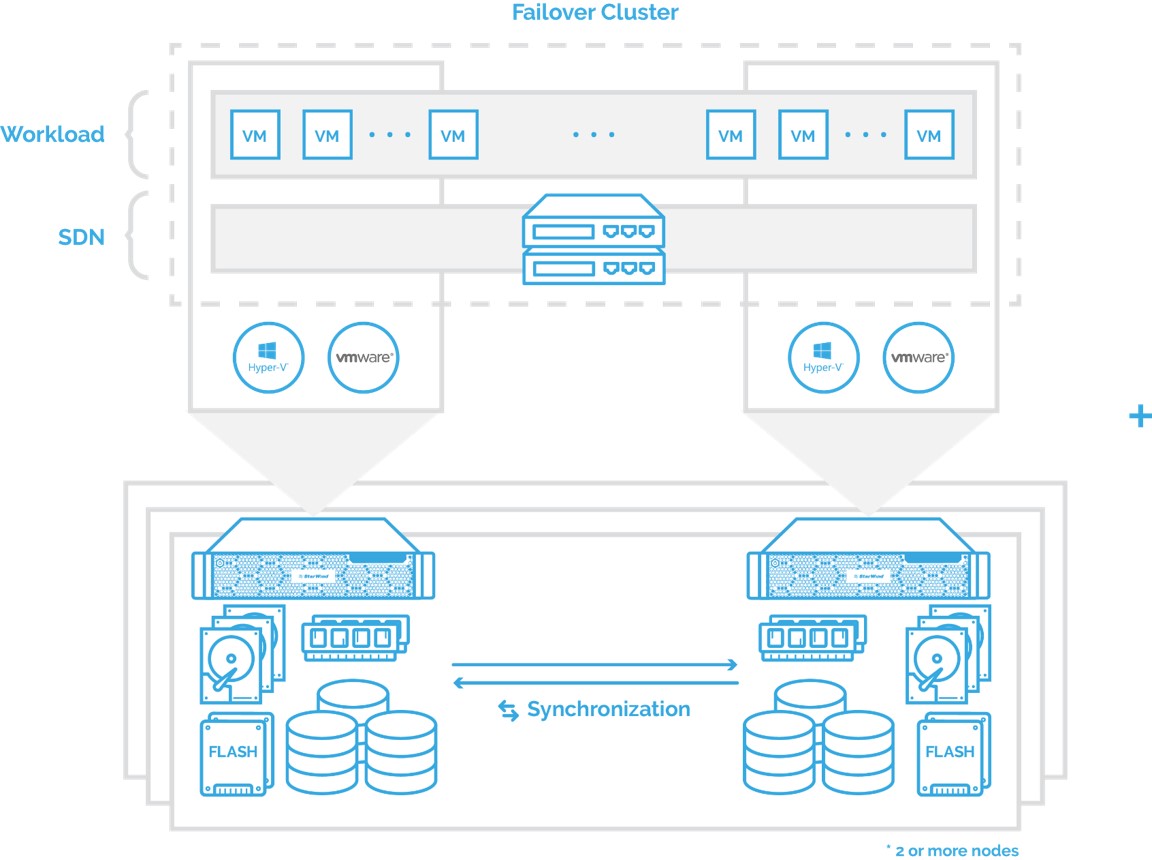

How do you think an important financial database server would feel if even a single transaction was lost in a node failure? That is the only way to guarantee data protection - without that level of redundancy you couldn't use it in production. Though it's not really a cache sync, but instead is ensuring that every individual write operation is completed on multiple nodes before responding to the OS/application that the write is complete. Yes - that is standard operating procedure for all of the HyperConverged options on the market.
#Starwind virtual san vmware install#
a Nutanix install on ESX/HyperV is host -> local CVM -> remote CVM -> local CVM -> host to get the write acknowledgement back), probably including passing through multiple TCP stacks, etc. That is also one of the downsides to hyperconverged IMHO - because all writes need to be mirrored across multiple hosts, your write latencies will always involve at least a couple network hops (from the host running the VM, to a second host for redundancy, and back), and possibly many more (eg. Just split the roles/applications into several VMs instead of running everything in a single one (do some load balancing) and you should be fineĬlick to expand.Yes - that is standard operating procedure for all of the HyperConverged options on the market. Having 4 or 6 VMs limited by let's say 50k-80k IOPs each means you have 200-300k in total. Since a hypervisor host is designed to run multiple VMs at the same time, this should not be a problem.

Basically, it's not a migration in common sense, VM that was running on the failed host also goes down (obviously) and then starts on the other host that is alive and the downtime is less than a minute (depends on fail-over timeout and how fast the VM boots).Īccording to my internal tests starwind immediately synchronizes not only the storage itself but it's own cache also, so if the physical node fails - you still have all the writes and data safe on the other one, what i find quite awesome.Īnother problem is that each hypervisor limits a single VM performance by design so a single VM is not capable to push out all the possible performance granted by underlying hardware/storage/vsan and so on. If one of the hosts participating in a properly set up cluster fails/power offs/crashes/bsods - a quick migration occurs.

Anyways, still very excited about the fact they are moving in this direction. What I saw in TP4 is quite buggy and as we all know everything that comes from Microsoft could be used in production at least after SP1 And their new licensing policy kinda suck since you have to pay much more to get all the new features. S2D is a very promising technology but do not expect to get it in production in nearest future. Not sure about performance issues under ESX since we are using Hyper-V and performance we have on VSAN is quite perfect but AFAIK it's almost the same on any hypervisor and corresponds directly to local storage performance.

We have a couple of hardware appliances from Starwind and are very happy with them. The fact is that Microsoft fail-over cluster live/quick migration powered with starwind is sometimes so smooth that you might not even notice that one of the hosts went down. Furthermore, Hyper-V would be the best choice here since in that case Starwind is installed directly on physical servers instead of VMs providing you with more simple and straightforward configuration. Starwind is rock-solid in terms of stability if set up properly.


 0 kommentar(er)
0 kommentar(er)
